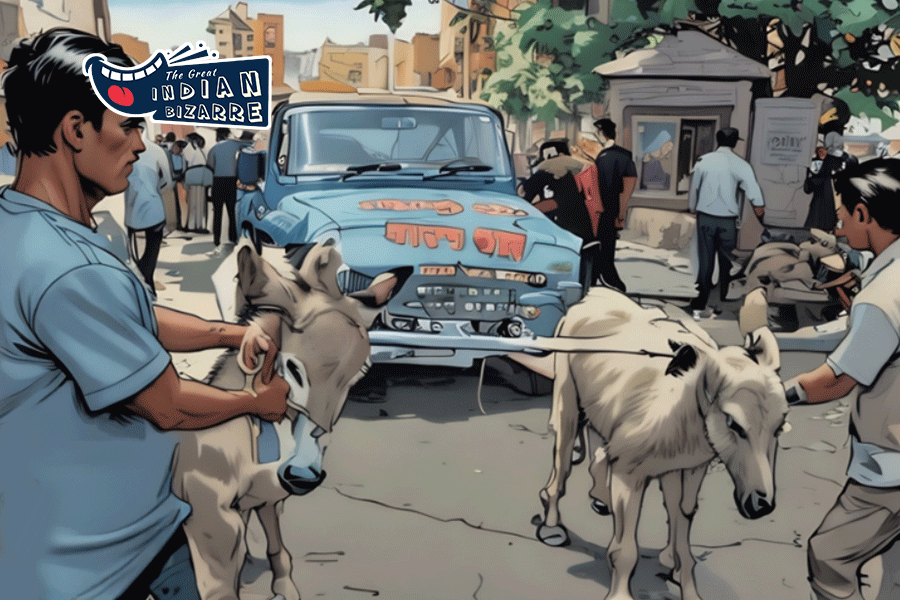 |
The Simpsons is arguably the most successful television show in history. Inevitably, its global appeal and enduring popularity have prompted academics (who tend to overanalyse everything) to identify subtexts of the series and to ask some profound questions. What are the hidden meanings of Homer’s utterances about doughnuts and Duff beer? Do the spats between Bart and Lisa symbolise something beyond mere sibling bickering? Are the writers of The Simpsons using the residents of Springfield to explore political or social controversies?
One group of intellectuals authored a text arguing that The Simpsons essentially provides viewers with a weekly philosophical lecture. The Simpsons and Philosophy claims to identify clear links between various episodes and the issues raised by history’s great thinkers, including Aristotle, Sartre, and Kant.
Alternatively, The Psychology of The Simpons argues that Springfield’s most famous family can help us grasp a deeper understanding of the human mind. This collection of essays uses examples from the series to explore issues such as addiction, lobotomies, and evolutionary psychology.
By contrast, Mark I. Pinsky’s The Gospel According to The Simpsons ignores philosophy and psychology, and focuses on the spiritual significance of The Simpsons. This is surprising, because many characters appear to be unsympathetic toward the tenets of religion.
However, all these philosophers, psychologists, theologians and politicians have missed the primary subtext of the world’s favourite TV series. The truth is that many of the writers of The Simpsons are deeply in love with numbers, and their ultimate desire is to drip-feed morsels of mathematics into the subconscious minds of viewers. In other words, for more than two decades we have been tricked into watching an animated introduction to everything from calculus to geometry, from pi to game theory, and from infinitesimals to infinity.
Homer3, the third segment of the three-part episode Treehouse of Horror VI (1995), demonstrates the level of mathematics that appears in The Simpsons. In one sequence alone, there is a tribute to history’s most elegant equation, a joke that only works if you know about Fermat’s last theorem, and a reference to a $1 million mathematics problem. All this is embedded within a narrative that explores the complexities of higher-dimensional geometry.
***
In hindsight, the mathematical undercurrent in The Simpsons was obvious from the start. In the first scene of Bart the Genius, viewers catch a glimpse of the most famous mathematical equation in the history of science.
The episode begins with a scene in which Maggie is building a tower of her alphabet blocks. After placing a sixth block on top, she stares at the stack of letters. The doomed-to-be-eternally-one-year-old scratches her head, sucks her pacifier, and admires her creation: EMCSQU. Unable to represent an equals sign and lacking any numbered blocks, this was the closest that Maggie could get to representing Einstein’s famous scientific equation E = mc2.
Some would argue that mathematics harnessed for the glory of science is somehow second-class mathematics, but for these purists there are other treats in store as the plot of Bart the Genius unfolds.
 |
While Maggie is building E = mc2 with her toy blocks, we also see Homer, Marge, and Lisa playing Scrabble with Bart. He triumphantly places the letters KWYJIBO on the board. This word, kwyjibo, is not found in any dictionary, so Homer challenges Bart, who gets revenge by defining kwyjibo as “a big, dumb, balding North American ape, with no chin…”
During this somewhat bad-tempered Scrabble game, Lisa reminds Bart that tomorrow he has an aptitude test at school. So, after the kwyjibo fiasco, the story shifts to Springfield Elementary School and Bart’s test. The first question that faces him is a classic (and, frankly, rather tedious) mathematics problem. It concerns two trains leaving Santa Fe and Phoenix, each travelling at different speeds and with different numbers of passengers, who seem to get on and off in odd and confusing groups. Bart is baffled and decides to cheat by stealing the answer sheet belonging to Martin Prince, the class dweeb.
Bart’s plan not only works, it works so well that he is whisked into Principal Skinner’s office for a meeting with Dr Pryor, the school psychologist. Thanks to skulduggery, Bart has a score that indicates an IQ of 216, and Dr Pryor wonders if he has found a child prodigy. His suspicions are confirmed when he asks Bart if he finds lessons boring and frustrating. Bart gives the expected answer, but for all the wrong reasons.
Dr Pryor persuades Homer and Marge to enrol Bart at the Enriched Learning Center for Gifted Children, which inevitably turns into a nightmarish experience. During the first lunch break, Bart’s classmates show off their intellects by offering him all manners of deals couched in mathematical terms. One student makes the following offer: Tell you what, Bart. I’ll trade the weight of a blowing ball on the eighth moon of Jupiter from my lunch for the weight of feather on the second moon of Neptune from your lunch.”
Before Bart can decipher the implications of Neptunian moons and Jovian bowling balls, another student makes a fresh and equally confusing offer: I’ll trade you one thousand of picoliters of my milk for four gills of yours.” It is yet another pointless puzzle, merely designed to belittle the newbie.
***
As might be expected many of the mathematical writers of The Simpsons have a passion for puzzles. Naturally this love of puzzles has found its way into various episodes.
For example, the world’s most famous puzzle, the Rubik’s Cube, crops up in Homer Defined (1991). The episode features a flashback to 1980, the year the cube was first exported from Hungary, when a young Homer attends a nuclear safety training session. Instead of paying attention to the instructor’s advice on what to do in the event of a meltdown, he is focused on his brand-new cube and cycling through some of the 43,252,003,274,489,856,000 permutations in order to find the solution.
A more ancient puzzle appears in Gone Maggie Gone (2009), an episode that is partly a parody of Dan Brown’s novel The Da Vinci Code. The storyline begins with a total solar eclipse, ends with the discovery of the jewel of St Teresa of Avila, and revolves around the false belief that Maggie is the new messiah. From a puzzle lover’s point of view, the episode’s most interesting scene concerns Homer, who finds himself trapped on one side of the river with his baby (Maggie), his dog (Santa’s Little Helper), and a large bottle of poison capsules.
Homer is desperate to cross the river. There is a boat, but it is flimsy, and can only carry Homer and one other item at a time. Of course, he cannot leave Maggie with the poison because the baby might swallow a capsule, and he cannot leave Santa’s Little Helper with Maggie in case the dog bites the baby. Hence, Homer’s challenge is to work out a sequence of crossings that will allow him to ferry everybody and everything safely to the other side.











